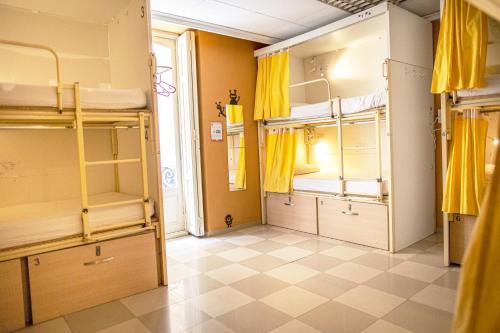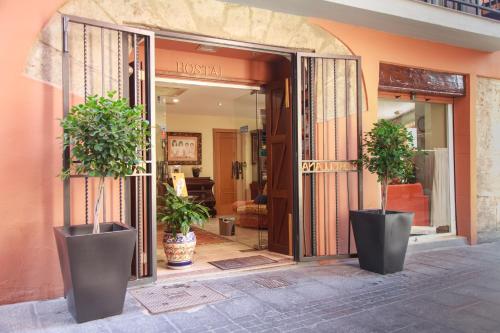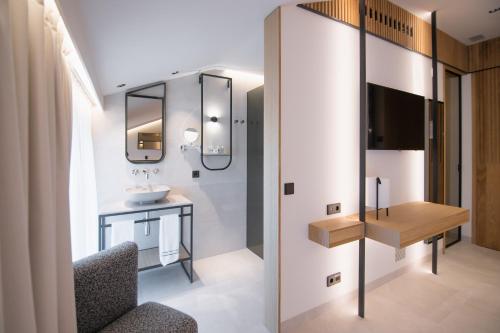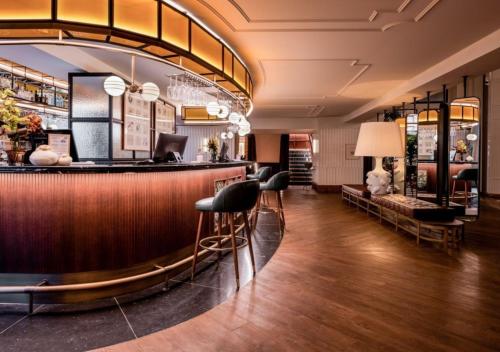Valencia would not be the city it is today without silk. And in the heart of Valencia is the ultimate symbol of this – La Lonja de la Seda, known in English as the Silk Exchange.
We’ve all heard of the “Silk Road”, the vast network of trade between Asia and Europe. Well, it got that name because a key product traded between the countries along the way was silk.
At the eastern end, the silk was produced in China and, at the western end, it was sold to Europeans who found comfort and status in the luxurious material.
One of the most prestigious of the places where this silk was sold was right here in the Spanish city of Valencia. And the Silk Exchange was, as the name suggests, the focus of this trade.
What is La Lonja de la Seda
La Lonja de la Seda is the historic Silk Exchange building in the Spanish city of Valencia. Built between 1482 and 1533, it was still used as a centre for trade well into the 20th century.
Why is Valencia’s Silk Exchange important?
The beauty of the Silk Exchange is one of the reasons it was added to the World Heritage List, with fine Gothic architecture and Renaissance decoration from the 15th century. But La Lonja de la Seda is also important because it represents the power and wealth of Valencia.
Can you visit La Lonja de la Seda?
La Lonja de la Seda is now open to the public and is a popular tourist attraction. You can visit the Silk Exchange to see the main halls and explore the art and architecture of the site.
Heading into the centre of Valencia’s Old Town, I don’t immediately spot Lonja de la Seda (the Silk Exchange) in the same way that I often find it easy to just wander and find myself in grand plazas with cathedrals or town halls.
I need to search around a bit for La Lonja de la Seda, because it’s actually a relatively small building for what it represents.
Its legacy is not in the grandeur of its architecture but in the opulence it helped the rest of the city afford. You see that in the cathedral, in the town hall, in the boulevards.
But that’s not taking anything away from the architecture here. It is still a beautiful building and one worth visiting inside and out – definitely one of the best things to see in Valencia.
This is somewhere where you’ll really appreciate having a guide, and this excellent local tour includes La Lonja de la Seda.
As I hope you’ll discover yourself, there’s a reason the Valencia Silk Exchange is considered to be one of the most beautiful examples of Gothic civil architecture in Europe.
History of La Lonja de la Seda
Construction of the Valencia Silk Exchange (La Lonja de la Seda) began in 1482, after the previous building that was being used for trade had become too small.
By this stage in history, much of the silk coming into Europe was actually being transported through North Africa, so Valencia was in the perfect location to be the distributor from Spain to the rest of the continent.
The main building in La Lonja de la Seda was finished in 1498, so trading began then. But the whole complex wasn’t completely built until 1533.
The city council commissioned the construction of the Silk Exchange and it was designed by an architect called Pere Compte, who was a master of Gothic architecture and took inspiration from the Lonja building in Palma de Majorca.
After it was finished, La Lonja de la Seda in Valencia was considered to be one of the best examples of the style in Spain.
Even within Valencia, which had become a wealthy and prosperous city, La Lonja de la Seda was one of the most important commercial buildings.
It was used as a silk exchange until the 18th century, and also had a role in the politics and culture of the city during that time, as a place where informal meetings and negotiations took place.
As the silk trade decline in the 1900s, La Lonja de la Seda was used for various other purposes, including as a customs house, a warehouse, and even a military barracks.
In the 19th century, it was restored and opened to the public as a museum. Still, some of its rooms were used for markets and other events, meaning the original purpose – a centre for trade – was still relevant hundreds of years after it was built.
Over the years, the Silk Exchange also played an important role in Valencia’s cultural scene, hosting events like concerts, plays, and dances that were accessible to people from all walks of life.
Things to see at La Lonja de la Seda
Although it’s not a massive building, there are quite a few things to see at La Lonja de la Seda, and it’s worth taking your time at each of them.
To understand the layout of the whole Silk Exchange complex, it’s easiest to think of it in four parts.
The first part, as you come in through the main gate, is the courtyard. Calm and cool, these days it is filled with orange trees that proudly hold the fruit that has become the city’s unofficial symbol.
But what is now peaceful would once have been full of activity, as traders gathered here to talk and trade, away from the authorities who were inside the building just metres away.
Going through the large doors off the courtyard, into the first main interior section of the Silk Exchange, you’ll find the main hall. It’s also known as the Contract Hall.
The columns that rise up throughout it would almost create a continuous atmosphere of garden coming in from the courtyard if they weren’t so big. Rather than being amongst quiet orange trees, it’s now as though you’re in a vast ancient forest.
I love the design of this room, where something that could be huge and cavernous actually feels quite intimate. I’m assuming this was intentional and was partly so people could trade one-on-one and do quiet negotiations without everyone hearing.
Next to the Contract Hall is the next section of the Valencia Silk Exchange, the Tower. It’s made up of three levels connected by a spiral staircase.
There’s a chapel at the bottom of it and parts of the tower were once used to lock up traders who hadn’t paid their debts. These days, though, there’s not too much to see here.
But the final section of the Silk Exchange is particularly impressive. It’s called the Pavilion of the Consulate of the Sea and has two levels.
Going up an external stone staircase, you get to the more impressive of the pavilion’s levels. Here, in this room with richly-decorated 15th century ceiling, was where the tribunal sat to work out disagreements between traders.
When you visit La Lonja de la Seda, you’ll easily see how each of these areas fit together to form an ornately cohesive complex.
Visiting La Lonja de la Seda
Although it doesn’t stand out from afar, it’s easy enough to find La Lonja de la Seda once you know where to look, right in the centre of the old town, next to the main market.
The entrance fee is very affordable and it doesn’t take too long to visit the Valencia Silk Exchange, even if you take your time and look at each room carefully.
It’s not the size, it’s the significance.
I would recommend that, however long you’re in Valencia for, you try to make time to visit La Lonja de la Seda.
Remember, silk trading was the most lucrative part of the economy here in Valencia for centuries, and inside the walls of this masterpiece is what makes the city how it still is today.
To make the most of your visit, I recommend having a local guide, and there’s this excellent affordable tour of Valencia that includes La Lonja de la Seda.
Or, you might like to consider one of these other good options:
If you can time your visit for a Sunday, you’ll find a flea market out front from 10:00 to 13:00, buying and selling antique collector items like stamps, coins, postcards, comics, and vinyls.
It seems the trading spirit has never left La Lonja de la Seda.
Where is La Lonja de la Seda?
The Valencia Silk Exchange is in the middle of the Old Town, near the Central Market.
The official address is Plaça del Mercat, 32, 46001 València, Spain.
You can see it on a map here.
When is La Lonja de la Seda open?
From Monday-Saturday, the Silk Exchange is open from 10:00 until 19:00.
On Sundays, it is open from 10:00 until 14:00.
How much does it cost to visit La Lonja de la Seda?
Admission to the Silk Exchange costs just €2 and €1 for a concession.
It is free on Sundays and holidays and with the Valencia Tourist Card.
Are there tours of La Lonja de la Seda?
If you are interested in a guided tour, I would suggest this excellent one which takes you through a few sites in the city to show you Valencia’s silk trade history.
Or visit La Lonja de la Seda as part of a private walking tour.
For more information, see the official website of La Lonja de la Seda.
Once you’re done admiring the Valencia Silk Exchange, you’ll have plenty of time to explore more of the city, with plenty of things to do in Valencia.
And if you’re feeling hungry, there are plenty of coffee shops, lunch bars or restaurants close by, particularly across the road at the Mercado Central.
THE BEST ACCOMMODATION IN VALENCIA
You’ll find lovely heritage hotels in Valencia’s historic centre, or there are more modern options along the beachfront.
BACKPACKER

As well as a fun and social atmosphere, the River Hostel has a really convenient location.
BUDGET

A charming family-run property, Hostal Antigua Morellana is great value for what you get.
BOUTIQUE

The interior design feels fresh and sophisticated at MYR Puerta Serranos, while the view overlooks the medieval heritage.
LUXURY

The service is superb at Only YOU Hotel, while the rooms and breakfast are beyond what you’d expect from a five-star property.
Absolutely amazing architecture and beautiful photos!
Thanks very much. Yeah, the architecture is stunning and it’s impressive to think about how long it’s been here for and how busy it would once have been!
What an incredibly beautiful building! I had never heard of it, but I’m definitely going to visit it now if I ever make my way to Valencia!
Oh, it’s a beautiful place – you have to see it! There are lot of other things in Valencia to do and this doesn’t take long, but it’s not worth skipping!